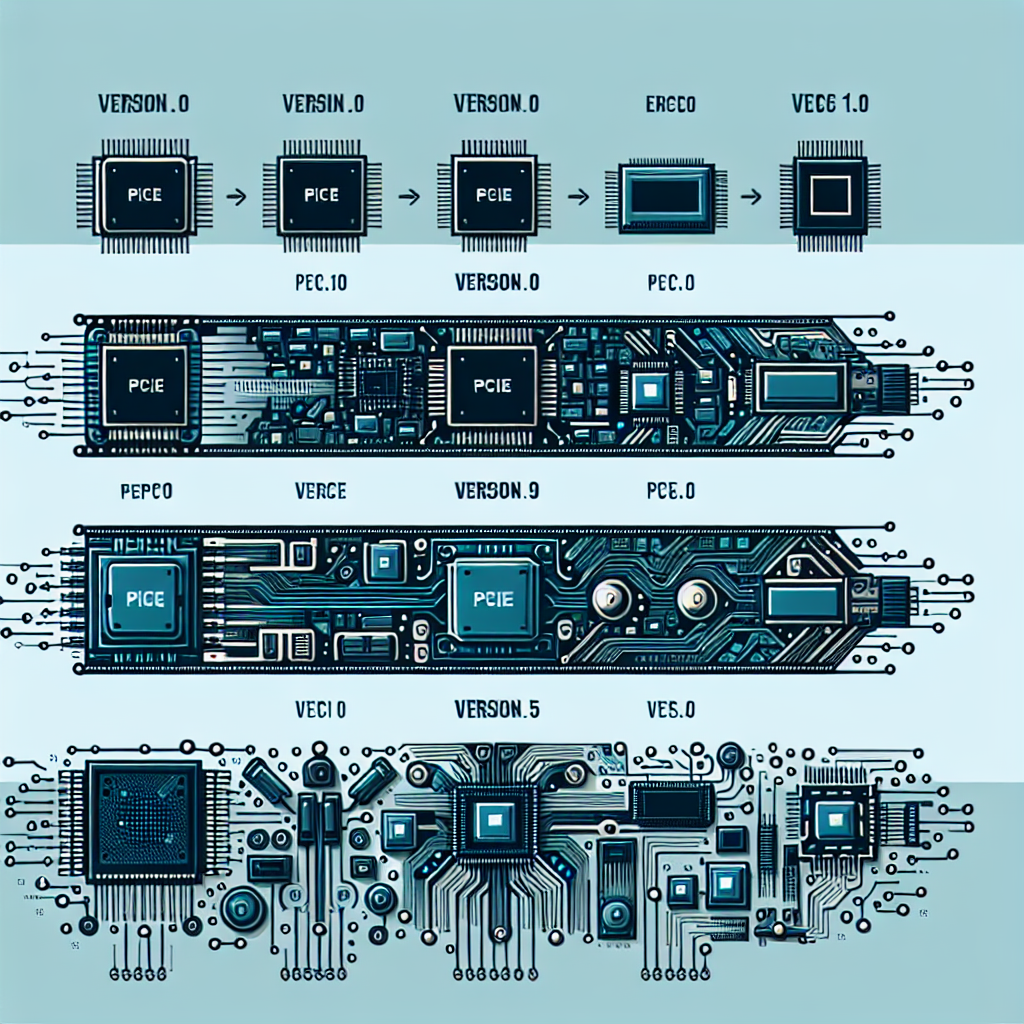Your cart is currently empty!
The Evolution of PCIe: From Version 1.0 to 5.0

The Peripheral Component Interconnect Express (PCIe) technology has come a long way since its introduction in 2003. With each new version, PCIe has evolved to meet the increasing demands of modern computing systems. From PCIe 1.0 to PCIe 5.0, the technology has seen significant improvements in terms of speed, bandwidth, and power efficiency.
PCIe 1.0, released in 2003, had a maximum transfer rate of 2.5 GT/s (gigatransfers per second) per lane, with a total bandwidth of 8 GB/s for a x16 slot. This version was a significant improvement over the previous PCI technology, offering faster data transfer speeds and better performance for high-speed peripherals.
PCIe 2.0, introduced in 2007, doubled the transfer rate to 5 GT/s per lane, providing a total bandwidth of 16 GB/s for a x16 slot. This version allowed for even faster data transfer speeds and improved performance for graphics cards, storage devices, and other high-bandwidth peripherals.
In 2010, PCIe 3.0 was released, increasing the transfer rate to 8 GT/s per lane and offering a total bandwidth of 32 GB/s for a x16 slot. This version further improved data transfer speeds and performance, making it ideal for high-performance computing applications.
PCIe 4.0, introduced in 2017, doubled the transfer rate once again to 16 GT/s per lane, providing a total bandwidth of 64 GB/s for a x16 slot. This version brought even faster data transfer speeds and improved performance, making it suitable for high-speed networking, artificial intelligence, and other demanding applications.
The latest version of PCIe, PCIe 5.0, was released in 2019. This version further doubles the transfer rate to 32 GT/s per lane, offering a total bandwidth of 128 GB/s for a x16 slot. PCIe 5.0 provides even faster data transfer speeds and improved performance, making it ideal for cutting-edge applications such as high-performance computing, artificial intelligence, and data analytics.
Overall, the evolution of PCIe from version 1.0 to 5.0 has brought significant improvements in speed, bandwidth, and power efficiency. With each new version, PCIe has continued to push the boundaries of what is possible in terms of data transfer speeds and performance, making it a crucial technology for modern computing systems.

Leave a Reply